Whatever one thinks of his subject matter, it’s difficult to deny R. Crumb’s prodigiousness with the pencil. He’s a master of crosshatching, and his illustrations and comics boil over with ideas, all sketched in his distinctive style: controlled yet frenzied, obsessed with proportion, often lewd and also oddly sweet. In his Art of Comics interview, Crumb hints at the birth of this style when he discusses how dropping acid for the first time fundamentally altered his work—and his view of the world. “I remember going to work that Monday, after taking LSD on Saturday, and it just seemed like a cardboard reality,” he says. “It didn’t seem real to me anymore. Seemed completely fake, only a paper-moon kind of world.” In lieu of the real world, Crumb created his own realm, some twisted amalgam of past, present, and subconscious. A new show at David Zwirner, “Drawing for Print: Mind Fucks, Kultur Klashes, Pulp Fiction & Pulp Fact by the Illustrious R. Crumb,” gives us a glimpse into Crumb’s mind through comics tear sheets and rarely shown pages from his private sketchbooks. Perhaps most striking among the sketchbook selections are his portraits of Aline Kominsky-Crumb, his longtime creative partner and wife. Lost in thought, she stares out from the page. She relaxes on the couch with her eyes half closed. She reads in the sunshine, her “ass getting sunburned while posing.” In a body of work notable for its horniness, these pictures of Aline stand out for their care and tenderness. No matter how lost Crumb gets in his own world (the introduction to his Art of Comics interview notes that as he worked on The Book of Genesis, “he pursued his vision in a desolate shelter in the mountains outside town, working for weeks without human contact”), he can always return to Aline to get his bearings, to find his way through this cardboard reality. Images from the David Zwirner exhibition—including a few of the Aline pages—appear below.
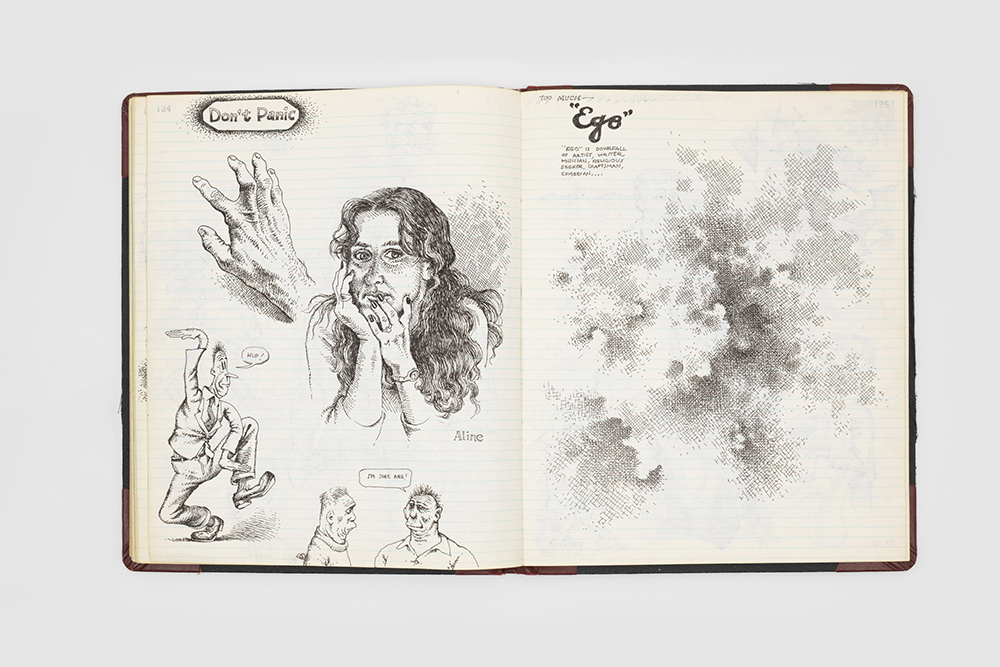
Page from R. Crumb, Sketchbook, 1979–1981. © Robert Crumb, 1979–1981. Courtesy the artist, Paul Morris, and David Zwirner.
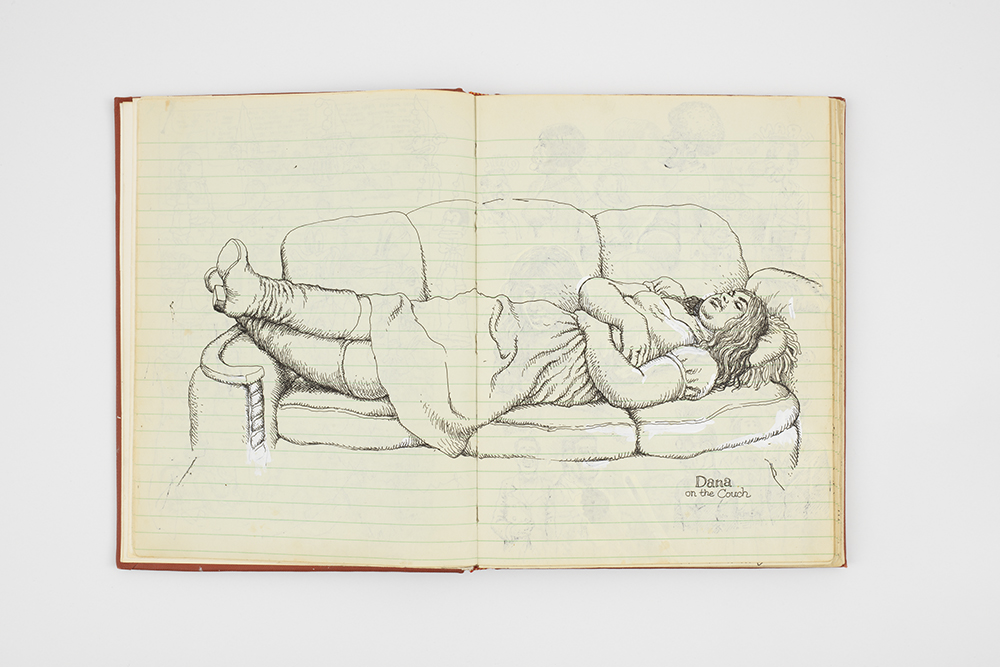
Spread from R. Crumb, Sketchbook, 1971. © Robert Crumb, 1971. Courtesy the artist, Paul Morris, and David Zwirner.
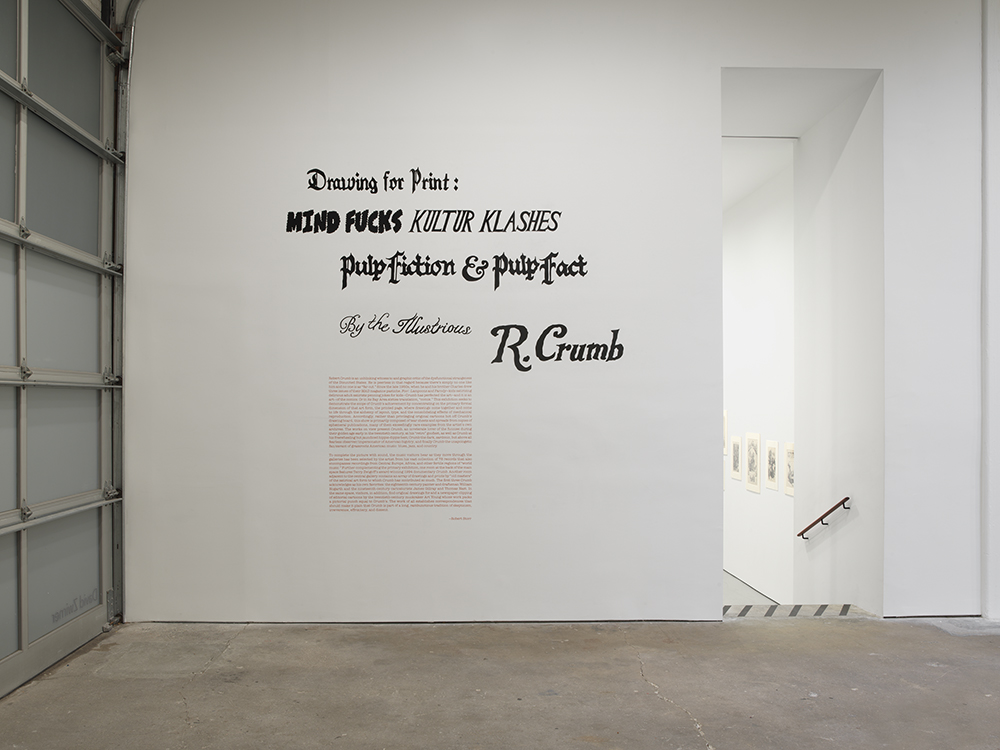
Installation view, “Drawing for Print: Mind Fucks, Kultur Klashes, Pulp Fiction & Pulp Fact by the Illustrious R. Crumb,” David Zwirner, New York, 2019. Courtesy David Zwirner.
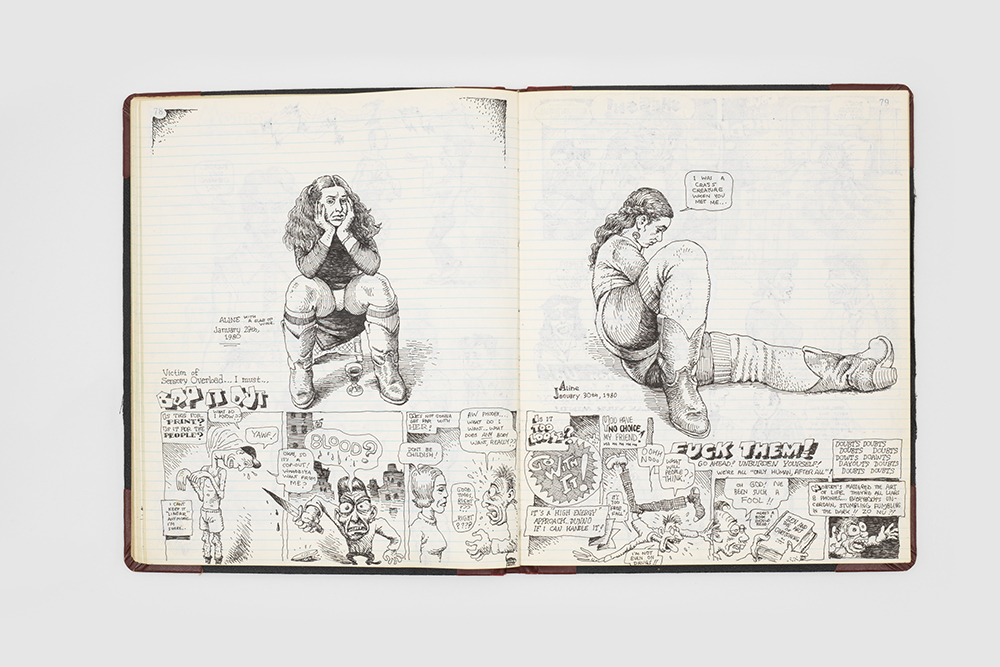
Page from R. Crumb, Sketchbook, 1979–1981. © Robert Crumb, 1979–1981. Courtesy the artist, Paul Morris, and David Zwirner.

Installation view, “Drawing for Print: Mind Fucks, Kultur Klashes, Pulp Fiction & Pulp Fact by the Illustrious R. Crumb,” David Zwirner, New York, 2019. Courtesy David Zwirner.
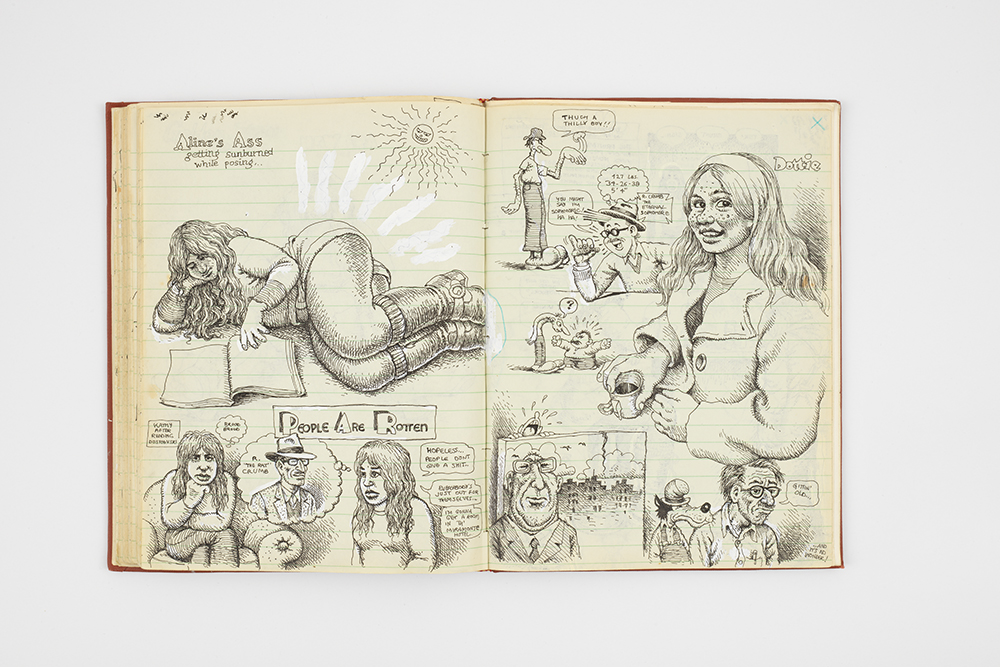
Spread from R. Crumb, Sketchbook, 1971. © Robert Crumb, 1971. Courtesy the artist, Paul Morris, and David Zwirner.
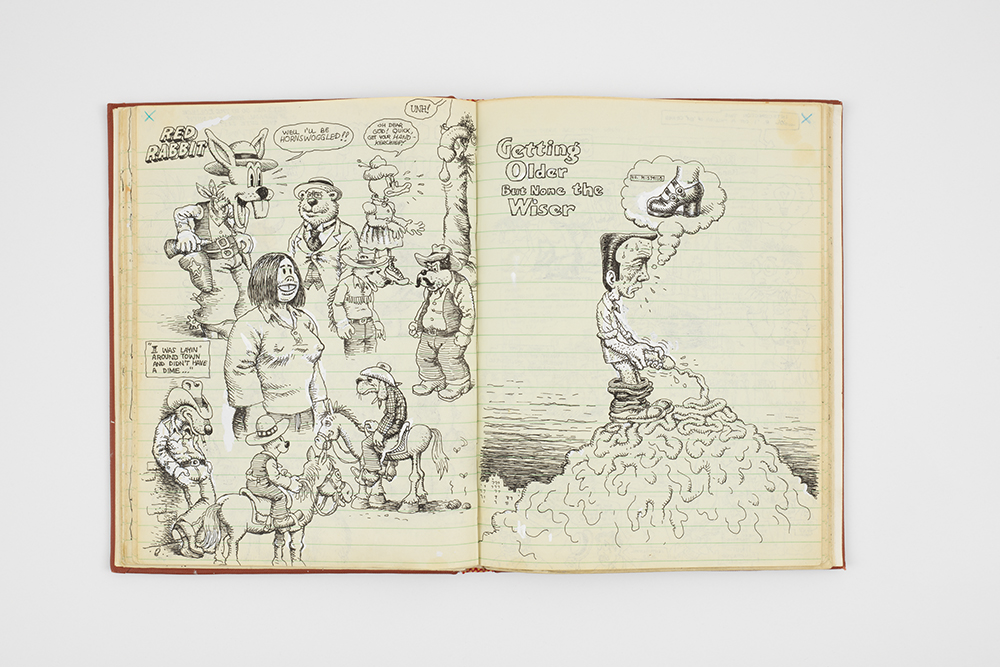
Spread from R. Crumb, Sketchbook, 1971. © Robert Crumb, 1971. Courtesy the artist, Paul Morris, and David Zwirner.

Page from R. Crumb, Sketchbook, 1979–1981. © Robert Crumb, 1979–1981. Courtesy the artist, Paul Morris, and David Zwirner.

Installation view, “Drawing for Print: Mind Fucks, Kultur Klashes, Pulp Fiction & Pulp Fact by the Illustrious R. Crumb,” David Zwirner, New York, 2019. Courtesy David Zwirner.
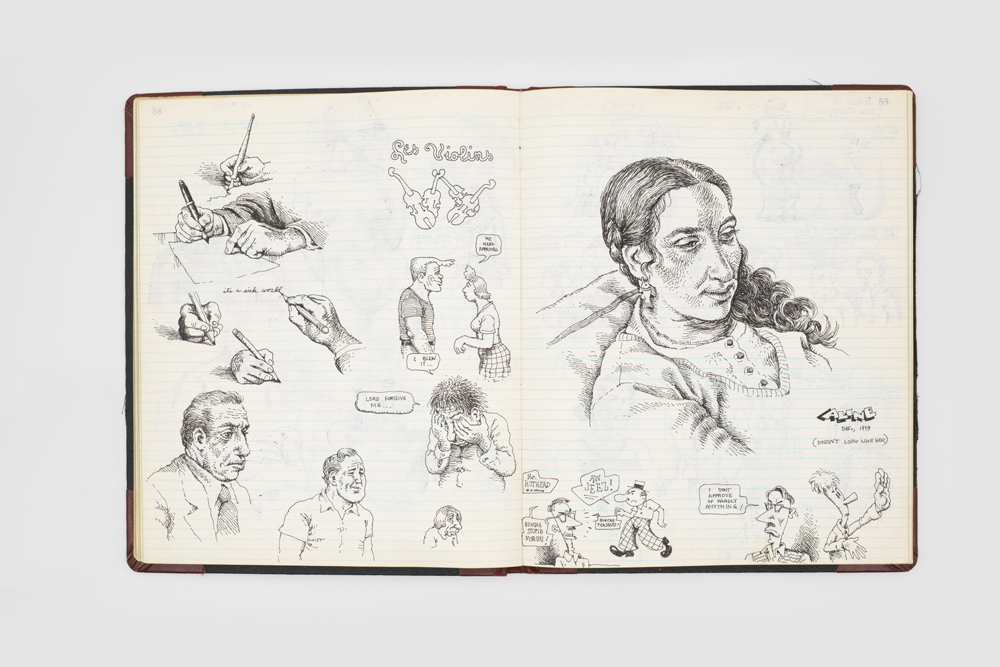
Page from R. Crumb, Sketchbook, 1979–1981. © Robert Crumb, 1979–1981. Courtesy the artist, Paul Morris, and David Zwirner.

Spread from R. Crumb, Sketchbook, 1971. © Robert Crumb, 1971. Courtesy the artist, Paul Morris, and David Zwirner.
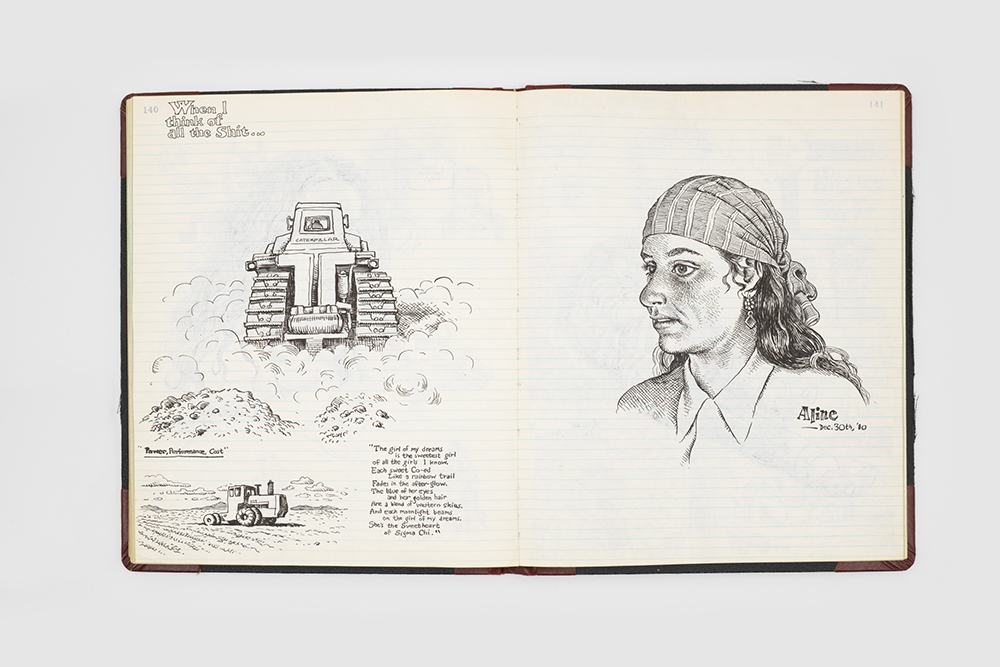
Page from R. Crumb, Sketchbook, 1979–1981. © Robert Crumb, 1979–1981. Courtesy the artist, Paul Morris, and David Zwirner.
from The Paris Review https://ift.tt/2EIwFo6
Comments
Post a Comment